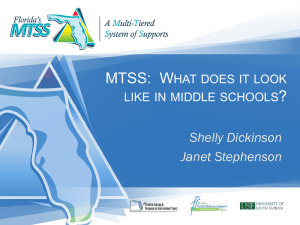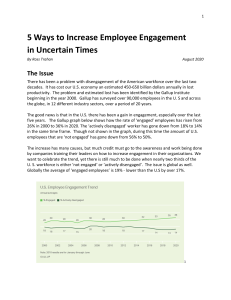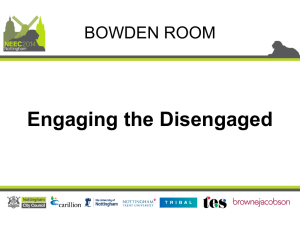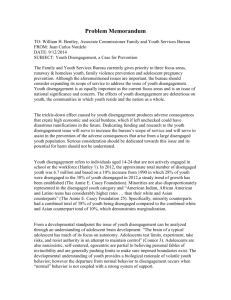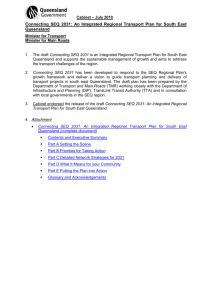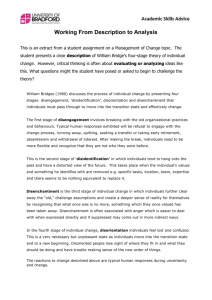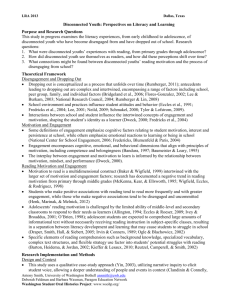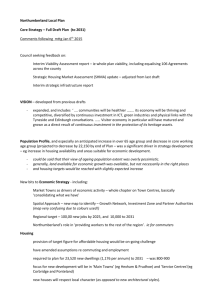Partnerships improving outcomes for disengaged young people
advertisement
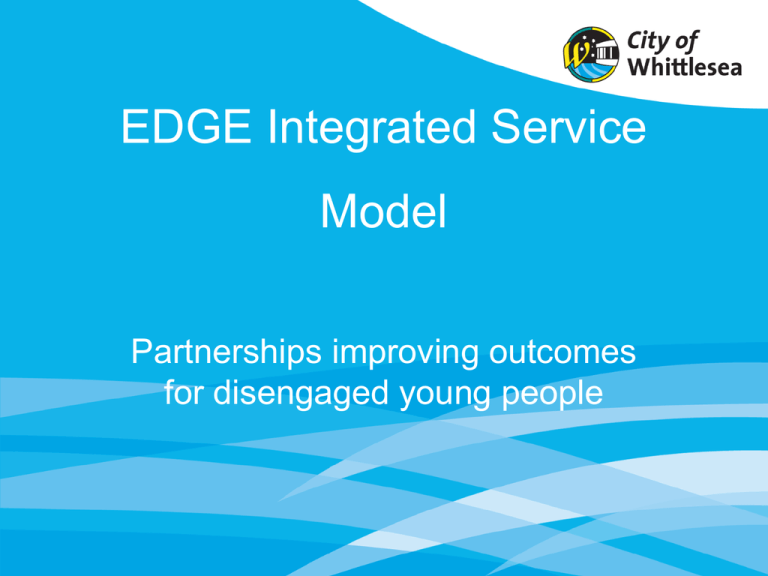
EDGE Integrated Service Model Partnerships improving outcomes for disengaged young people Young people in the North • 19.5% of the regional population are young people aged 12 to 25 years • 59.3% of youth population attend secondary/tertiary institutions • School retention rates for the north of Melbourne are between 84% and 90% with Nillumbik being the highest and Moreland being the lowest • 7.3% of young people aged between 15 and 19 years are disengaged from education/work in the northern region (compared to Melb average of 6% and Victoria average of 7%) • 0.45% of regional population are homeless, and 35% (or approx 1400) are young people with the majority being young women Young people at the Interface • In 2006 we had 238,516 young people in ICs • By 2031, 27% of the state’s young people will live ICs • Overall young people will have lower educational achievements than metro Melbourne • More likely to leave school earlier and to disengage from school and employment • Less likely to complete year 12 and attend post secondary education • Have lower TER scores • High prevalence of disengagement and ‘at risk behaviours’ • Engage in self-harm behaviours • Experience depressive symptoms City of Whittlesea General • 2011 estimated population is 162,067, forecast by 2031 is 295,000 • Growing Aboriginal community • 33% born overseas Young People • Current number of young people 10 to 25 is 31,000, forecast by 2031 is 58,000 • The youth disengagement rate is 16.9%, more than double that of the MSD Role of Local Government in relation to young people • Young people are approximately 20% of the population • Of the 79 Victorian LGAs 98% invest providing (or co-ordinating) youth services • LGAs are the main providers of generalist youth workers that are close to the ground, flexible and responsive Local Government Youth Workers Have a key role : • Civic participation • Prevention and secondary intervention • Leadership in collaborative planning and service delivery • Policy development with State and Federal governments • Sector development • Working with schools offering complementary skills to support parents and teachers with the development of young people The ‘EDGE’ model • Young people were involved in the design of the building and the naming • Co-located services cover the service spectrum: prevention, secondary and tertiary intervention • Some are located on site, others deliver sessionally, some use the facilities for counselling or programs • Co-location has promoted a shared approach to solutions, strengthened service effectiveness and addressed all of life issues • The integrated model is a successful example of cross sector and cross agency collaboration • Young people have expressed they feel respected and welcomed in the space The ‘EDGE’ model Council and Pavilion partnership • • • • Shared ethos centred on respect for young people Welcoming environment and quality interactions Complementary skill sets On-site, seamless, cross referral process and secondary consultations • Significant relationships providing young people with access to support and guidance • Integrated planning and advocacy • Project EDGE: Waiting list program. A Youth Connections initiative delivered with Kildonan aimed at transition from disengagement

